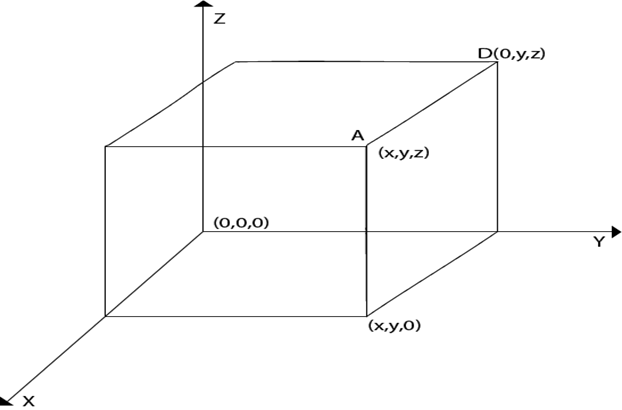Three Dimensional Graphics
The three-dimensional transformations are extensions of two-dimensional transformation. In 2D two coordinates are used, i.e., x and y whereas in 3D three co-ordinates x, y, and z are used.
For three dimensional images and objects, three-dimensional transformations are needed. These are translations, scaling, and rotation. These are also called as basic transformations are represented using matrix. More complex transformations are handled using matrix in 3D.
The 2D can show two-dimensional objects. Like the Bar chart, pie chart, graphs. But some more natural objects can be represented using 3D. Using 3D, we can see different shapes of the object in different sections.
In 3D when a translation is done we need three factors for rotation also, it is a component of three rotations. Each can be performed along any three Cartesian axis. In 3D also we can represent a sequence of transformations as a single matrix.
Computer Graphics uses CAD. CAD allows manipulation of machine components which are 3 Dimensional. It also provides automobile bodies, aircraft parts study. All these activities require realism. For realism 3D is required. In the production of a realistic 3D scene from 2D is tough. It require three dimension, i.e., depth.
3D Geometry
Three dimension system has three axis x, y, z. The orientation of a 3D coordinate system is of two types. Right-handed system and left-handed system.
In the right -handed system thumb of right- hand points to positive z-direction and left- hand system thumb point to negative two directions. Following figure show right-hand orientation of the cube.

Using right-handed system co-ordinates of corners A, B, C, D of the cube
Point A x, y, z
Point B x, y, 0
Point C 0, y, 0
Point D 0, y, z
Producing realism in 3D: The three-dimensional objects are made using computer graphics. The technique used for two Dimensional displays of three Dimensional objects is called projection. Several types of projection are available, i.e.,
- Parallel Projection
- Perspective Projection
- Orthographic Projection
1. Parallel Projection: In this projection point on the screen is identified within a point in the three-dimensional object by a line perpendicular to the display screen. The architect Drawing, i.e., plan, front view, side view, elevation are nothing but lines of parallel projections.
2. Perspective Projection: This projection has a property that it provides idea about depth. Farther the object from the viewer, smaller it will appear. All lines in perspective projection converge at a center point called as the center of projection.
3. Orthographic Projection: It is simplest kind of projection. In this, we take a top, bottom, side view of the object by extracting parallel lines from the object.
Three Dimensional Models
The techniques for generating different images of a solid object depend upon the type of object. Two viewing techniques are available for viewing three-dimensional objects.
- Geometry: It is concerned with measurements. Measurement is the location of a point concerning origin or dimension of an object.
- Topological Information: It is used for the structure of a solid object. It is mainly concerned with the formation of polygons with the help of points of objects or the creation of the object with polygons.